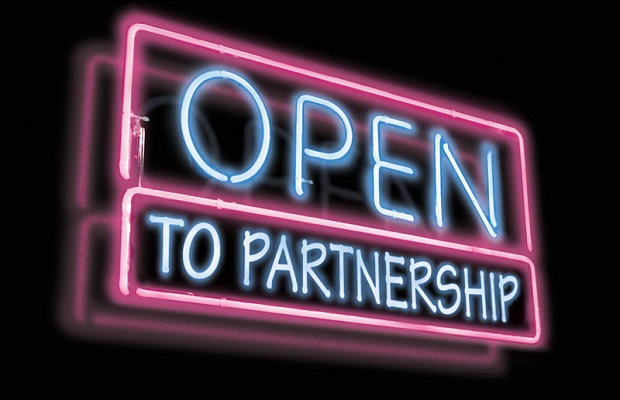The impact an Instagram campaign can have on your brand’s bottom line is hard to overstate. A properly-run campaign is a great way to increase your brand’s reach and improve engagement and conversions; in fact, on average, businesses generate $6.50 for every $1 spent on influencer marketing.
The key word here is properly. As valuable as a well-run Instagram campaign can be, a poorly-run one can be just as damaging to your brand, which means it’s crucial to get it right. There are a lot of factors that contribute to the success of an Instagram campaign, but today we’re going to focus on one of the major ones: pricing.
Many brands don’t have a good sense for what they should pay a celebrity or influencer for sponsored content. And as a result, they wind up spending too much money for minimal return. We want to help you avoid that, so today, we’re going to show you how to accurately determine what you should spend on your Instagram campaign. Read on for our tips!
Step 1: Determine What You Want
There’s actually a step that comes before this one: figure out how much you can to spend. Without a clear idea of how much you can afford for your Instagram campaign, you’ll have a hard time assessing whether you’re getting the most bang for your buck.
Once that part is done, the next step is to determine what you want from the sponsored Instagram posts. After all, if you don’tknowyour goals for your campaign, how will you know whether or not you’ve met them?
There are a few criteria you can use to set benchmarks for success. Here are some of the most common ones.
Engagement or Reach?
What’s your brand’s biggest area of opportunity? Is the problem that not enough people are aware of your brand, or is it that they’re aware, but simply aren’t buying your product?In other words, do you need an influencer or celebrity who can reach the largest audience possible, or is it more important that you increase conversions?
What Are Your KPIs?
Saying you want your campaign to increase revenue is one thing, but if you really want to get the most value of your campaign, you need to go deeper. Key Performance Indicators (KPIs) refers to the specific data you’ll use to measure the success of your campaign. This can include things like clickthrough rates, time spent on your site, and so on; the specific metrics you choose are up to you.
How Much Time Do You Have?
Determining how much time you can afford to spend on your campaign is another key criteria. If you’re running the campaign because your sales are slowing down and you’re worried your brand can’t survive much longer, you’ll need a shorter-term, more aggressive campaign (and will likely have to pay more for it). On the other hand, if your brand is otherwise healthy and yourfocus is more on your brand’s growth, you can consider a strategic and long-term campaign.
Step 2: Determine What You Need
In order to reach your goals for your campaign, you should carefully consider what celebrity or influencer you partner with to achieve them. Picking the right celebrity or influencer will improve your chances of reaching your targets; on the other hand, picking the wrong one can mean the difference between a successful campaign and a failed one. Here are some of the criteria to consider.
The Accounts’s Audience Size
If your campaign is focused on reach, you should target celebrities or influencers who have larger audiences; since you don’t need those audiences to do anything except be aware of your brand, the more people you can reach, the better.
On the other hand, if your campaign relies on engagement, a large audience is less important than an engaged one.
The Accounts’s Engagement Rate
Engaged audiences not only listen to celebrities or influencers’ recommendations; they also act on those recommendations. To determine an account’s engagement rate, Shane Barker of Social Media Week offers this formula:
E=(A+B+C)/3
“E” refers to the expected engagement rate. “A,” “B,” and “C” all refer to the engagement rates of the accounts’s posts picked at random. In other words, to determine your expected engagement rate, pick three random posts by the account, add their individual engagement rates (the number of likes + number of comments, divided by the account’s follower count), then divide by three. An ideal engagement rate should be in the 0.5% range or higher; anything below that, and the account’s audience might see your post, but they’re unlikely to do anything with it.
Micro or Macro Influencer?
If your brand is in a broad market (say, for example, fashion or retail) and you just want to increase brand awareness, partnering with a macro influencer is a smart move; macro influencers tend to have large audiences. Macro influencers tend to be the celebrities on Instagram.
If your brand is niche, or if engagement is your primary objective, then a micro influencer might be a better option. Micro influencers have fewer followers (typically 10,000 – 90,000), but those followers are much more likely to act on the influencer’s recommendation.
Step 3: Consider the Variables
As brands start to realize the value of influencer and celebrity Instagram campaigns, the cost of the campaigns has steadily increased over the past few years. These factors can impact how much you pay for a campaign, so it’s a good idea to be aware of them.
The Celebrity or Influencer’s Market
If you’re running a lifestyle or beauty brand, you’re in luck: Instagram influencers in the lifestyle market charge, on average, $172 per post, while Instagram influencers in the beauty market charge around $205 per post. This is due to the fact that beauty and lifestyle influencers make up 35% of all Instagram influencers; in other words, there’s a high supply, and not necessarily as high a demand.
But if your brand is focused on food or photography, you’ll have to pay a little bit more; quality influencers in those markets are harder to come by, which means they charge more (about $385 per post for photography influencers, and $326 per post for food influencers).
Influencer’s Age
By the same token, the influencer’s age can impact their prices, too — younger Instagram influencers tend to charge less money than older ones. There’s no specific answer as to why, but in all likelihood it’s because older influencers are more willing to negotiate and stand firm on their fees, whereas younger influencers are more likely to show flexibility when it comes to negotiating prices.
Verified Checks
On Instagram, a verified check is a great way to massively boost the audience your campaign will reach. Unlike Twitter, where anybody can request and (potentially) receive a check mark, verified checks are only given out to major public figures or celebrities on Instagram.
These verified checks can also massively increase one other thing: the cost. On average, verified accounts typically charge 584% more than the recommended price for an Instagram campaign, while unverified accounts only charge 14% above the recommended price.
The Value of Your Product
Another factor that can impact the price of your Instagram campaign is the value of your product. Generally speaking, higher-value products mean you have a greater profit margin, which means you have more flexibility to negotiate on the price without risking losing money on your campaign. The flip side is, the lower the value of your product, the less room you’ll have to negotiate.
Whether the Influencer or Celebrity Is a Fan of Your Brand
The last thing to consider is whether the influencer or celebrity you’re targeting is a fan of your brand or your products. If they are, you may find that they’re willing to lower their prices to help out (typically, the trade-off is that they’ll take less money, as long as you provide them with free product). Not only does this help lower your costs, but as an added benefit, the influencer’s or celebrity’s endorsement is more likely to achieve the results you want; their audience can usually tell the difference between an enthusiastic endorsement of a brand the influencer or celebrity genuinely likes and an endorsement that’s just given for the money.
At the end of the day, what you pay comes down to three main factors: your goals, your metrics for success, and the influencer or celebrity you use to achieve it. As long as you keep these tips in mind, you’ll be able to minimize your cost and maximize the benefit to your brand.







